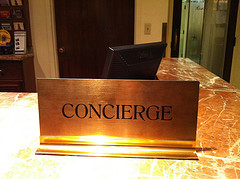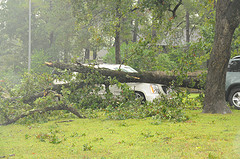 The media is full of stories that can put nervous people off traveling, but the statistics still show you’re more likely to die crossing the street than in a plane crash.
The media is full of stories that can put nervous people off traveling, but the statistics still show you’re more likely to die crossing the street than in a plane crash.
Unfortunately for today’s traveler, losing your life in a plane crash, a civil riot, or a sinking cruise ship is the least of your worries.
There are actually many unconventional ways that travel can kill you if you’re not careful.
1. Nibbling the latest Asian delicacy
Both China and Japan feature amazingly diverse cuisine and part of the appeal lies in the wide variety of unique ingredients.
The puffer fish, for example, is considered a delicacy, but it can only be prepared by licensed chefs for a simple reason: the puffer fish contains tetrodotoxin, a neurotoxin that is over a thousand times more deadly than cyanide.
The first recorded case of tetrodotoxin poisoning was found in the ship log of Captain James Cook from 1774 when the crew of the ship ate some local tropical fish and then fed the remains to the pigs kept on board. The crew experienced numbness and shortness of breath while the pigs were found dead the next morning (likely due to eating the body parts that contained most of the poison).
Unfortunately, a growing number of restaurants have been known to serve the fish to risk-taking tourists. With no antidote for tetrodotoxin, it’s safer to stick to the chilis and wasabi.
2. Slogging through the jet lag
For many travelers, jet lag is simply a minor annoyance that causes them to feel a little out of sorts – a condition that leaves you with jangled nerves, severe exhaustion, and a lack of appetite.
Unfortunately, recent studies have found that a person whose circadian rhythms – that is their internal bodily clock – are scrambled are at a greater risk of heart attack. They’re also at risk of being severely confused and distracted. Sometimes travelers who cross multiple time zones can distracted enough to forget they are in another country and walk into the street without checking for cars in the right direction.
Jet lag is no joke. Take enough time on the other side to get properly recalibrated before you head out to see the sites.
3. Forgetting your vaccinations
For some travelers, coming home with a weird disease amounts to bragging rights. Even travelers with healthy immune systems need to check their vaccinations before heading out because access to adequate local medical care may not be available.
Here are the top traveler diseases that are preventable by vaccines or treated with antibiotics:
- Tetanus – this one can occur anywhere, but it’s most common in places like India and central Africa. It’s called lockjaw for a reason too – this disease affects your nervous system, causing muscles to spasm and seize. Get a booster every 10 years.
- Cholera – this disease is caused by poor sanitation, so it can occur wherever there is contaminated food and water. It often occurs in areas affected by natural disasters that disrupt the sewage and water treatment facilities. This one can kill.
- Typhoid – this one is most commonly contracted in India, parts of Asia, Africa, and South America. It develops slowly and in the majority of cases it’s not fatal. It’s caused by consuming contaminated food or water.
- Hepatitis – while there are various incarnations of hepatitis, travelers need to worry most about types A and B, which are found in developing countries including Mexico, Latin America, India and parts of Africa. Both types can lead to severe damage to the liver, but only Hep B is considered fatal.
- Yellow fever – another disease spread by mosquitoes, this one is mostly found in tropical regions of South America and Africa. Patients usually end up with jaundice, which gives cause the the name ‘yellow’ fever and untreated cases can lead to death.
- Meningitis – found in an area stretching across Africa from Senegal to Ethiopia, this disease starts with a fever and neck stiffness and untreated cases are often lethal.
- Japanese Encephalitis – again, blame the mosquitos but this one affects the central nervous system and is most common in agricultural regions like Cambodia, India, Nepal, Malaysia and Vietnam.
Be aware that while getting the jabs is all well and good, the effectiveness of the cholera and typhoid vaccines are in dispute (some say they are only about 50% effective).
There are also some diseases travelers pick up for which there is no vaccine, including:
- Dengue fever – featuring headaches as well as severe muscle and joint pain, Dengue is found in tropical regions of Africa, Singapore, and Taiwan.
- Malaria – one of the trickiest diseases for travelers because the medication has to be taken before, during, and after the trip and it can cause unpleasant side effects.
In both cases, bite prevention is the best medicine because these diseases are spread by mosquitoes.
4. Failing to fidget
Travelers who are in a situation of prolonged immobility – in planes, cars, busses, and trains – are at risk of deep vein thrombosis (DVT), a life-threatening complication caused by blood clots that travel through the bloodstream and into vital organs causing:
- Chest pain and pressure
- Shortness of breath
- Sudden collapse and even death
Recent statistics from the Centers for Disease Control and Prevention, the CDC, indicate that between 60 and 100 thousand Americans die each year from DVT. Death can even occur hours after the traveler has returned to normal mobility because the general pain is typically dismissed as a pulled muscle or soreness.
The primary key to preventing DVT is movement, so travelers are warned to keep moving. Standing up, jumping or wriggling around, and even fidgeting can keep blood flow moving.









